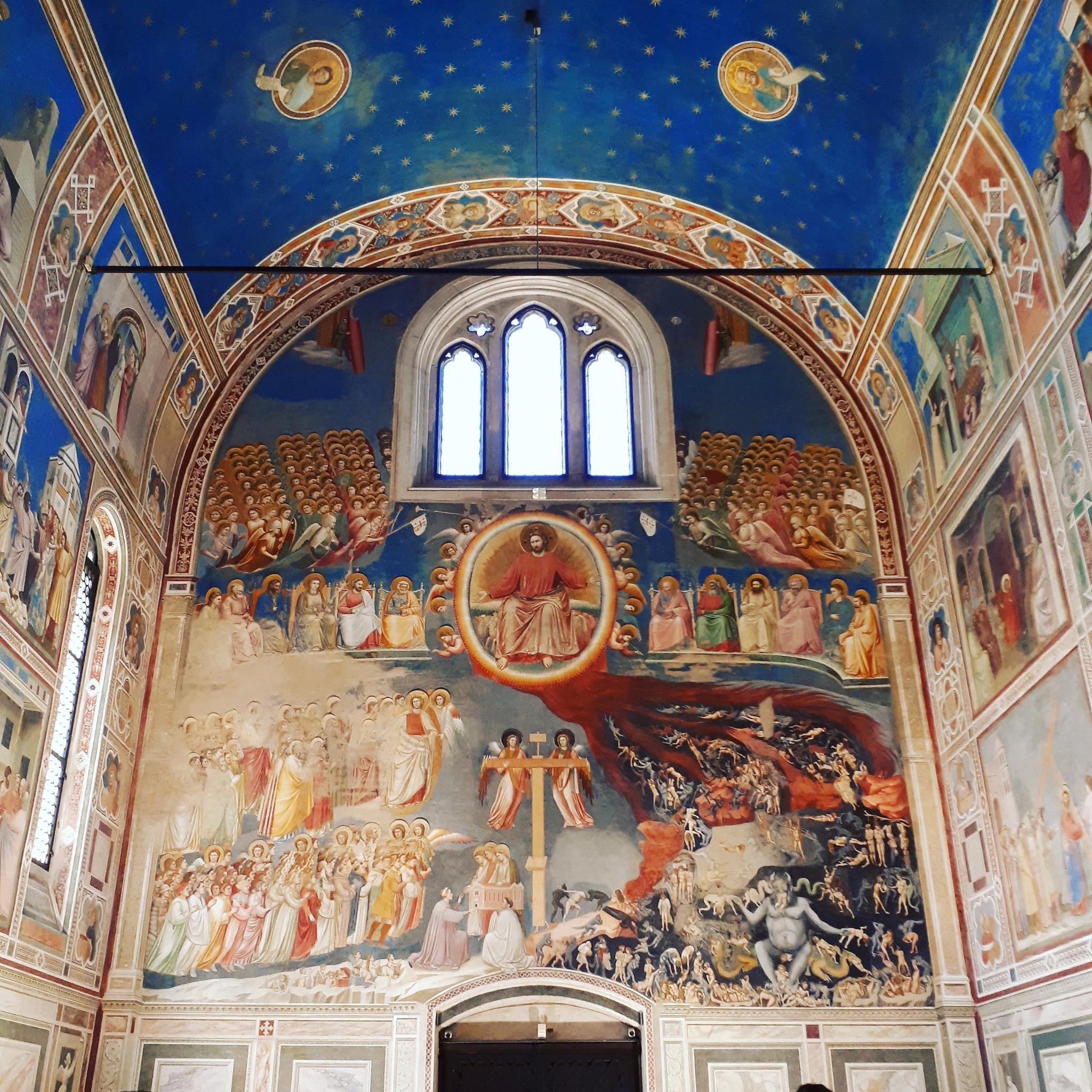Scrovegni Chapel

(Film footage by Bob Gelsthorpe from Wales in Venice)
It seems odd to be traveling at speed by train, rather than boat, as we journey away from the buzzing canals of Venice towards the small mainland town of Padua. We booked our tickets days in advance, in anticipation of the excited tourists and fresco lovers making their pilgrimage alongside us.
We arrive early, all too eager, to see Giotto’s masterpieces that await us inside the Scrovegni Chapel, painted in 1305. My hands shake slightly, both from excitement and from my first ever Italian espresso. Calm down I think, I don’t want my increased heart rate and body temperature to mess up the microclimate inside the waiting room…
The fragility of the work inside the chapel means that visits are meticulously controlled. Groups of 25 people maximum visit for no longer than 30 minutes at pre-booked times. In an air-conditioned room we wait for 15 minutes, watching a film about Giotto and the Scrovegni family, until the ‘interior microclimate’ is stabilised. We are then directed into the chapel, and are told that we have exactly 15 minutes to experience.
The efficiency of this routine is fascinating, and the exclusivity of the visit makes it all the more exciting.
I worry that the images of the introductory film will dampen the amazement of my first glimpse of the chapel walls. But I am wrong. To say that I gasped seems a little dramatic, but I was in awe. With the other 24 visitors, I move wordlessly into the centre of the chapel, eyes glittering at what we are perceiving.
Every inch of space is covered in fresco. The chapel is quite small in comparison with others around the world, but it is taller than I expect and is densely packed.
Narratives of the life of Christ and the Virgin Mary are laid out in three layers across opposing walls. The narrative starts on the top register with scenes of Christ’s grandparents, and the Virgin Mary’s life. The bottom register displays narratives such as the Passion, and scenes immediately proceeding the Crucifixion. On the west wall, above the entranceway, is the striking Last Judgement; a subtle moral reminder to those exiting the chapel.
In between these narrative scenes, faux marble panels create a sense of the walls being inlaid with stone. These abstract patterns of marble stone are actually masterful paintings by Giotto.
I feel completely engulfed by images.
Judas Kissing Christ, one of the most famous scenes from the bible, was painted over 700 years ago yet there is still an unbearable suspense in the image. The buon or true fresco technique has bound pigment together with plaster so that the painting literally becomes part of the wall. The narratives therefore become truly part of this chapel, and part of the offering of the Scrovegni family in their attempt to repent for their sins.
In the era before linear perspective was discovered, Giotto created masterful scenes of naturalism and architectural space. Here I see an interest in the world, and the real physical space that humanity occupies.
The most striking section however is not the walls, but is above me. With head titled, I gaze up in wonder at the brilliant lapis lazuli blue saturating the ceiling. Dusted with golden stars, this is not a depiction of the sky or the deep blue of Venetian waters. This sweeping veil of blue, with portraits of Christ and other saints peeking out, is a depiction of heaven.
Through colour, Giotto creates the most sacred and simple expression of paradise.
With this idyllic thought in my head, our 15 minutes is up.
SM

